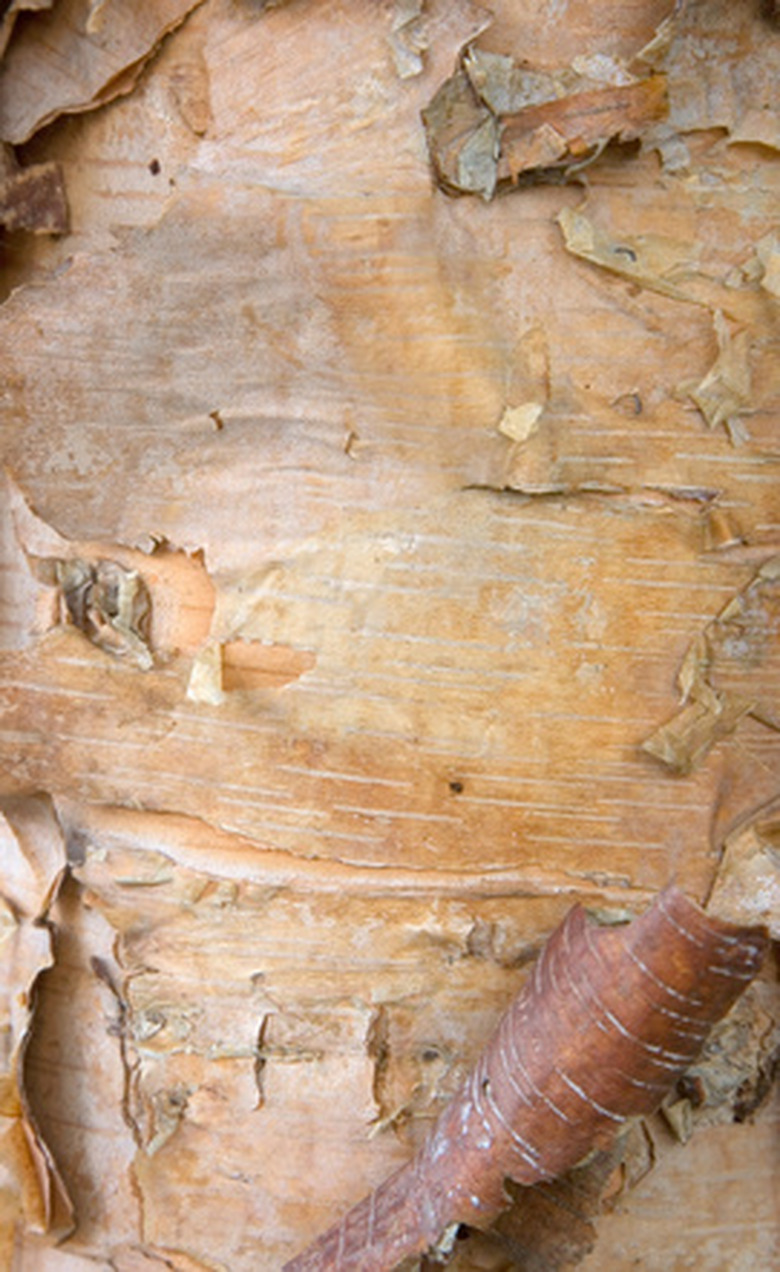How To Take Care Of River Birch Trees
The river birch tree (Betula nigra) is a moderate to fast-growing deciduous tree that thrives in U.S. Department of Agriculture plant hardiness zones 4 through 9. River birches can grow to 80 feet tall, but are most commonly between 40 and 50 feet tall. This is a low-maintenance tree that is highly resistant to the diseases and pests found in other birch varieties. It likes moist soil and has evolved to survive flooding, so care must be taken to ensure that it receives adequate water, especially in warm climates.
Step 1
Step 1
Water the river birch tree once a week in the spring and summer when the weather is dry. Water the tree slowly and deeply, providing 8 to 18 inches of water over two or three hours with a trickling hose. The river birch likes moist soil, and should receive between 30 and 40 gallons of water a month, including rainfall. Water the tree less in the fall and during winter dormancy.
- The river birch tree (Betula nigra) is a moderate to fast-growing deciduous tree that thrives in U.S. Department of Agriculture plant hardiness zones 4 through 9.
- The river birch likes moist soil, and should receive between 30 and 40 gallons of water a month, including rainfall.
Step 2
Step 2
Spread a 2- to 4-inch layer of fresh organic mulch around the tree every spring to improve the soil, protect the tree's shallow roots, reduce competition from weeds and help the soil retain moisture. Extend the mulch for a minimum 3-foot radius around young trees and a 6-foot radius around mature trees. Do not allow the mulch to touch the trunk of the tree.
Step 3
Step 3
Feed your river birch tree with a slow-release fertilizer early in the spring only if a soil test indicates a deficiency. If a soil deficiency is found, correct the problem by spreading a granular fertilizer evenly over the tree's entire root zone. Fertilizer applications should generally not exceed 1 tablespoon of fertilizer per foot of tree height.
Step 4
Step 4
Prune your tree if needed during the early portion of its winter dormancy. River birch trees require only a light pruning to remove dead and diseased branches, and to maintain the desired shape. Never prune away more than 25 percent of a river birch's canopy. Some birches produce multiple trunks and will need to be pruned to a single trunk early in life if desired.
- Spread a 2- to 4-inch layer of fresh organic mulch around the tree every spring to improve the soil, protect the tree's shallow roots, reduce competition from weeds and help the soil retain moisture.
- River birch trees require only a light pruning to remove dead and diseased branches, and to maintain the desired shape.
Tip
Check the moisture level of the soil around your tree by grabbing a handful of soil and forming it into a ball. If the soil crumbles and refuses to hold the shape, it is time to water the tree.
Tip
The river birch is very insect and disease resistant, and likely will not develop health problems with proper care. If a problem does occur, contact your local garden center or extension office for help identifying and treating the issue.
Tip
Birch trees do best in a soil pH between 5.0 and 6.5, but can handle more alkaline soils. If your soil test shows a more acidic soil, you can raise the pH by spreading wood ash over the soil.
Things Needed
- Organic mulch
- Slow-release fertilizer (if indicated)
- Pruning shears
- Pruning saw
References
- Friends of the Urban Forest: River Birch
- Monrovia: River Birch
- Missouri Botanical Garden: Betula Nigra
- U.S. Department of Agriculture: Betula Nigra 'Heritage' 'Heritage' River Birch
- Unites States Department of Agriculture: How to Grow and Maintain a Healthy Birch Tree
- Augusta Magazine: Think Before You Plant
- North Carolina State University: A Gardener's Guide to Fertilizing Trees and Shrubs
- Iowa State University Extension and Outreach: How to Change Your Soil's pH
